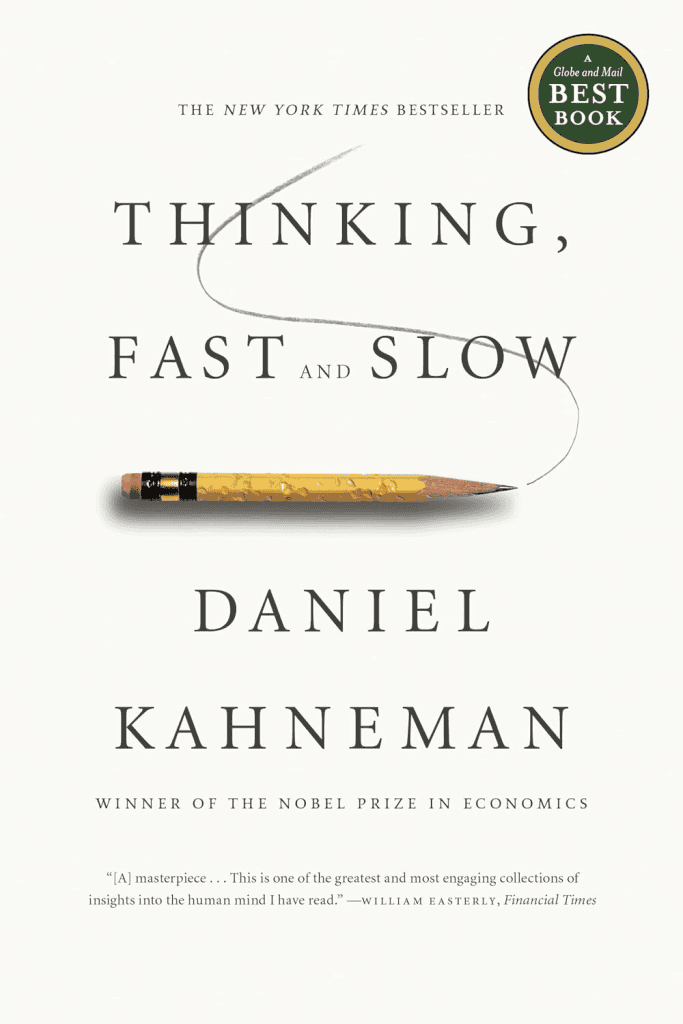Facing conventional paths? Explore billionaire success stories to see unique strategies redefining wealth creation in tech and space.
Every billionaire in 2025 started somewhere different. Mark Cuban sold garbage bags door-to-door at age 12. Sara Blakely worked at Disney World as a chipmunk mascot. Jeff Bezos left his Wall Street job to sell books online from his garage.
These stories break a common myth: there’s no single path to extreme wealth. What’s even more striking? The Forbes billionaire list shows 87% of today’s billionaires are self-made. They didn’t inherit their fortunes – they built them.
But here’s what’s fascinating: while their paths look random, successful billionaires share specific traits. They think differently about money, time, and risk. They see opportunities where others see problems. And most importantly, they act on these opportunities with precision and persistence.
Take Bernard Arnault, who runs LVMH. In 1984, when France’s economy struggled, he bought a bankrupt textile company that owned Christian Dior. Today, he’s among the world’s wealthiest people. His strategy? He saw value where others saw failure.
Or MacKenzie Scott, who helped build Amazon from scratch and now uses her wealth to transform philanthropy. She’s giving away billions with a new approach: direct grants to organizations, no strings attached.
These billionaire success stories teach us something crucial: wealth creation isn’t about following a template. It’s about recognizing patterns, understanding principles, and applying them in your unique way.
Let’s examine how today’s billionaires built their wealth, and more importantly, what practical lessons we can learn from their experiences.
What is unconventional wealth creation?

- Building wealth through distinct, non-traditional strategies.
- Focus on creativity, risky endeavors, and niche markets.
Example(s) of unconventional wealth creation
Elon Musk’s work in both electric cars and space travel is a standout case. SpaceX has reshaped space travel by creating reusable rockets, significantly reducing costs. This has made space more accessible and stirred investment interest. With Tesla, Musk advanced the appeal of electric vehicles, pushing them into mainstream consciousness. They are no longer just cars; they now symbolize innovation and a shift away from fossil fuels.
Richard Branson’s ventures exemplify diverse, creative business endeavors. Through Virgin Galactic, he spearheaded commercial space tourism, offering civilians a chance to experience space. Branson’s approach across industries reflects adaptability and foresight, which have been critical to his success.
Types of unconventional wealth creation
Type 1: Innovative industries
There’s a growing pool of wealth within technological fields. This includes space exploration, as companies like SpaceX and Virgin Galactic lead the charge. Tech innovations, especially in AI and automation, have been generating exciting opportunities. Renewable energy stands out, too. It’s tapping into the shift toward sustainable solutions, which provides lucrative investment streams. This focus on tech and green energy uncovers opportunities for future billionaires through early investments in cutting-edge tech.
Books like “The Innovator’s Dilemma” by Clayton Christensen explore how disruptive technologies can create new markets.

However, investment in such sectors is risky and demands a deep understanding of the landscape. I’ll go into more detail on Clay Christensen’s work, so keep reading.
Type 2: Unique investment strategies
Investment strategies that diverge from traditional paths are gaining traction among billionaires. Angel investing lets individuals back startups, which could potentially offer high returns. Meanwhile, venture capitalists focus on emerging markets or technologies, diversifying into alternative commodities and private equity. This approach mitigates risk despite being less conventional.
David F. Swensen emphasizes a coherent investment strategy. He suggests aiming for equity-rich, diversified portfolios. This approach isn’t just for increasing wealth; it balances risk with long-term gains.
Podcasts such as “(UN)Conventional Wealth” offer insights on investment tactics. They discuss alternative strategies and financial education, aiding in wealth accumulation. Nonetheless, these methods require meticulous planning and knowledge of the markets involved.
Before we dive deeper into billionaire success stories, it’s worth noting that this builds on some key principles of the billionaire mindset. If you’re just getting started with billionaire concepts or want to refresh your understanding, our comprehensive guide on [link]Understanding Billionaire Mindset[/link] will give you the groundwork you need. For those already familiar, let’s continue exploring billionaire success stories…
Benefits of millionaire mindset strategies

- Boosts personal growth and discipline.
- Encourages proactive problem-solving.
To understand why billionaires become successful, we must look at their mindset. This mindset shapes their approach to life and business, setting them apart from others.
Benefit 1: Enhanced decision-making
Millionaires prioritize their decision-making skills. Long-term vision and strategic thinking are key traits. They balance immediate needs with future goals, allowing them to make informed decisions.
An excellent resource on this idea is “The Millionaire Mind” by Thomas J. Stanley. This book delves into how successful individuals strategize for future gains while managing present stresses.

Moreover, decision-making under pressure is a common terrain for billionaires. Tools to manage stress and uncertainty are crucial. Techniques like mindfulness and meditation aid in clear-headed analysis during stressful times. Success in high-stakes environments isn’t merely luck but the result of refined systems and training.
Books like “Thinking, Fast and Slow” by Daniel Kahneman highlight the psychology behind decision-making, offering insights into cognitive processes.

Benefit 2: Improved resilience and adaptability
Resilience is another significant aspect of the millionaire mindset. Financial failures are part of the journey. Building mental strength and perseverance prepares individuals to tackle these challenges without deterring them from their path. Resources like “Grit: The Power of Passion and Perseverance” by Angela Duckworth can shed light on developing resilience in personal and professional contexts.
Change is constant, especially in today’s fast-evolving markets. Adaptability helps the wealthy to shift strategies quickly, ensuring long-term success. This is particularly relevant as emerging technologies reshape industries.
“The Lean Startup” by Eric Ries is a great text to explore adaptive strategies. Ries discusses how startups thrive by continuously testing and iterating on their products and business models, a tactic that can apply to any level of business operations.

Benefit 3: Amplified wealth-building techniques
Wealth-building itself is a skill within the millionaire mindset. It’s essential to understand how money can grow exponentially through smart investment strategies. It’s not just earning money but making it work more effectively. T. Harv Eker captures this succinctly:
“Rich people have their money work hard for them. Poor people work hard for their money.”
Books like “Rich Dad Poor Dad” by Robert Kiyosaki explain investment strategies and the importance of financial education. Most billionaires become billionaires by actively managing and scaling their financial ventures, often beginning in uncharted territories and unique investments.
Benefit 4: Strengthened networks and collaborations
The power of networking cannot be overstated. Establishing and maintaining strong professional relationships expands opportunities exponentially. Networking skills cultivate beneficial partnerships, attracting like-minded collaborators and investors. A book that elaborates on this concept is “Never Eat Alone” by Keith Ferrazzi, which emphasizes the importance of connecting with others to succeed.
In many ways, relationships are a supporting pillar for financial success. Networking promotes collaboration, fosters innovation, and broadens reach in otherwise inaccessible markets.
Benefit 5: Focused discipline and self-management
Discipline anchors the millionaire mindset. Consistency in performance, whether during boom or bust periods, is crucial for sustaining wealth. Self-discipline enables individuals to focus on long-term goals, despite immediate distractions or challenges.
“Start with the end in mind. If you want to be a millionaire, talk like one, act like one, work like one.”
Bob Proctor
Research such as that found in “Atomic Habits” by James Clear emphasizes how small, consistent actions contribute to larger successes over time. Clear’s focus on building productive habits aligns well with the disciplined nature of successful financiers.
For professionals looking to augment their path to success, diving deeper into these strategic mindsets and reading from these recommended texts can provide the framework necessary for growth.
🪄 The mindset of billionaires is not just about financial gain; it drives innovation and creates lasting societal impact – their strategies often address global challenges.
Disruptive innovation in business explained

- Disruptors change industries and consumer behavior.
- They push quick adoption of new tech and business models.
- Learn how leaders used disruption to build vast wealth.
How disruptors redefine industries and consumer behavior
Disruptive innovation in business refers to a process where smaller companies with fewer resources successfully challenge established industry leaders. Introduced by Clayton Christensen, the Harvard Business School professor, this concept explains how innovative technologies, products, or business models can shift market dynamics and consumer preferences. Disruptors often start by targeting overlooked segments, offering a solution that is cheaper or more accessible. Over time, they improve their offerings, capturing more of the market and challenging established players.
A prime example of disruptive innovation reshaping consumer behavior is Netflix in the entertainment industry. Netflix’s approach to subscription-based streaming introduced a shift in how consumers accessed media. It rendered traditional viewing schedules of cable television less relevant, setting new standards for convenience. As a result, traditional media companies have struggled to keep up with these new expectations, prompting significant changes in their business models. This case clearly illustrates how disruptive businesses prompt established companies to innovate or risk becoming obsolete.
Disruption is not just about technology; it’s about changing how whole systems operate. Keep in mind projects like Uber and Airbnb, which have changed the taxi and hotel industries. Books like “The Innovator’s Dilemma” (previously mentioned) explore these transformations deeply, providing insights into why even the best companies can fail when they don’t innovate.
Discussion on the swift adoption of new technologies and business models
Technological advancements and new business models are adopted quickly today. This is not by chance. It’s due to what disruptors introduce—practical improvements that solve real-world problems. Often, disruptors are nimble and operate in a manner that lets them implement and spread innovations rapidly. They employ agile strategies, continually tweaking their models. For instance, how Tesla introduced electric cars. Without the complexities of traditional automakers, Tesla can innovate faster.
In adopting new technologies, digital platforms have played a crucial role. Cloud computing, AI, and IoT are not just buzzwords. They’re tools that allow businesses to enhance operations and understand customer needs. According to a Forbes article, businesses using AI gain significant advantages, with improvements in efficiency and customer experience reported.
Yet, not everyone accepts new technology at the same rate. There’s friction from regulatory bodies and existing stakeholders who might resist change to hold onto the status quo. Sometimes, this resistance can curb innovation, creating barriers that entrepreneurs must navigate. Disruptors who overcome these barriers often shape not just the market but cultural attitudes toward new technologies. Understanding these dynamics is crucial for anyone interested in transformative business strategies.
Key sectors impacted by disruptive innovation
Technology, finance, and healthcare
The tech industry is a fertile ground for disruption with innovations like blockchain altering transaction methods. Fintechs are rewriting financial services. Companies such as Stripe and Square offer easier payments, disrupting traditional banking. In healthcare, disruptors like telemedicine platforms reshaped patient-doctor interactions.
Digital healthcare saw massive growth, with projected future acceptance rates jumping as technical capabilities align with consumer needs.
McKinsey
Retail and logistics sectors experiencing transformation
Retail and logistics have also seen transformation. The traditional retail model faced a significant threat following Amazon’s rise. Quick deliveries and broad selection reshaped customer expectations, pushing incumbents to rethink logistics and inventory management systems. Advances in technologies like drones and robotics are set to further disrupt these sectors, enhancing efficiency and reducing costs. Studies on retail logistics emphasize the swift need for adaptation for survival. Disruptive innovation in retail extends to how consumers purchase goods and the backend systems involving distribution and delivery.
Case study: Steve Jobs and Apple
Steve Jobs’ impact on tech is immeasurable. With the launch of the iPhone in 2007, Apple’s reinvention of personal technology began. At the time, the smartphone market did not grasp the potential of an all-in-one device. Jobs saw an opportunity where others didn’t. The iPhone wasn’t just a phone. It was a compact computer, a music player, and a GPS device all in one. Apple’s App Store concept changed how software was distributed. Third-party developers could now reach users directly.
Apple’s impact stretched beyond gadgets. Music was next. iTunes shifted how music was bought and consumed. While Apple’s ecosystem extended into communication, the shift pushed others like Nokia into oblivion. Apple’s commitment to design and functionality set a benchmark. In understanding Apple’s approach, texts like “Steve Jobs” by Walter Isaacson provide a deeper dive into how Apple became a transformative force.
Case study: Jeff Bezos and Amazon
Jeff Bezos turned a simple online bookstore into a tech behemoth. Amazon evolved through persistent innovation and expanding what an “online store” could be. Focusing on customer service and fast delivery, it set standards in e-commerce. Its revenue growth consistently outpaced traditional stores, accentuated by its Prime membership model, creating a loyal base willing to pay for premium service.
Amazon didn’t stop at retail. Innovations in logistics, with warehouse automation, reshaped order fulfillment. The launch of cloud computing services via Amazon Web Services (AWS) invalidated the traditional IT storage market. Today, AWS is a critical revenue stream, dominating cloud computing.
Bezos’ strategy illustrates the potential of expansion without losing focus on core services. Books like “The Everything Store” by Brad Stone capture Bezos’ multifaceted approach in revolutionizing sectors, offering insights into a business model eternally committed to innovation.
For readers seeking further exploration into these case studies’ strategies, the article on Billionaire Business Strategies provides a broader view of unrealized potential strategies in business evolution.
How do entrepreneurial success habits work?

- Billionaires rely on daily habits to stay on track.
- Includes goal setting, lifelong learning, and networking.
1. Goal setting and planning
Success starts with clear goals. Writing down goals makes you 42% more likely to achieve them. This highlights the importance of establishing tangible targets. Goal-setting isn’t just about making a plan; it’s about creating a roadmap for success. Using tools for effective planning, like SMART goals, ensures that objectives are specific, measurable, achievable, relevant, and time-bound.
Billionaires often revisit and adjust their goals. It’s logical. Markets change, industries shift.
Books like “Measure What Matters” by John Doerr discuss setting goals alongside key performance indicators.

But this isn’t a one-size-fits-all strategy. Critics argue rigid planning can lead to overcommitment and stress. Balancing flexibility with financial constraints is key. If you want further insights into setting and achieving goals, you can check out Franklin Covey’s workshops on planning and productivity.
2. Lifelong learning and curiosity
The quest for knowledge is a constant on the path to success. Billionaires, such as Warren Buffett and Mark Cuban, devote time to reading daily, illustrating their commitment to continuous learning. Workshops, online courses, and seminars are not just for beginners or mid-level professionals. They’re for anyone eager to stay relevant.
Learning is not simply absorbing information. It’s about applying new findings to advance one’s career. Critics note, however, that such a relentless pursuit of education can lead to burnout. Striking a balance between work and study is crucial.
“Principles” by Ray Dalio offers insights into applying these concepts practically, emphasizing reflection and adaptability.

3. Networking and relationship building
Connections often open doors money cannot. About 95% of successful people point to networking as a key factor in their achievements. Networks provide access to opportunities, mentors, and fresh ideas. Entrepreneurs today leverage social media and professional networks like LinkedIn to connect with like-minded individuals.
It’s not just about number of contacts. It’s about cultivating meaningful relationships. Some argue against too much focus on networking, fearing it could overshadow personal growth. Yet, the benefits often outweigh the risks. Workshops and events, like those by Entrepreneur’s Organization, can help refine networking skills and techniques.
4. Health and wellness focus
A sound mind in a sound body is more than a saying. Prioritizing physical and mental health is crucial for maintaining high productivity levels. Successful entrepreneurs have non-negotiable morning routines that often include exercise, reading, and quiet reflection.
Regular exercise enhances discipline and mental clarity. But critics might argue that extensive routines can feel overwhelming. The National Institutes of Health’s findings on exercise and productivity can offer guidance.
Books like “Thrive” by Arianna Huffington provide insights into balancing wellness with the demands of a high-powered lifestyle.

5. Habit development and discipline
Specific habits play a significant role in success. Nearly 72% of successful figures relate their achievements to established habits. These include persistent goal-setting and a consistent positive outlook. Discipline bridges the gap between goals and outcomes.
Yet, critics argue maintaining such discipline could lead to neglecting personal relationships or well-being.
“The Power of Habit: Why We Do What We do in Life and Business” by Charles Duhigg explores these dynamics extensively, offering strategies for cultivating productive routines. Where discipline meets practice, success follows closely behind.

If you’re ready to keep exploring the importance of these habits, the article “Common Habits of Billionaires Explained” provides an insightful perspective on how consistent behaviors fuel big achievements.
These habits, when incorporated thoughtfully, build the foundation for not just financial success, but broad, personal fulfillment as well.
Conclusion
The paths of today’s billionaires show us that wealth creation has moved beyond traditional methods. From Elon Musk’s electric vehicles to Jeff Bezos’s e-commerce revolution, each success story carries unique lessons in innovation and persistence.
These billionaire success stories demonstrate that transformative wealth often comes from solving big problems. The common thread isn’t just about making money – it’s about creating value through innovation, maintaining strong habits, and staying adaptable in changing markets.
The blueprint is clear: set focused goals, commit to continuous learning, build meaningful relationships, and maintain your physical and mental well-being. Whether you’re interested in technology, finance, or emerging markets, there’s room for new approaches and fresh perspectives.
Remember that Jobs started in a garage, and Bezos began by selling books online. Their success wasn’t instant – it was built on consistent habits, clear vision, and the courage to challenge existing systems.
Your next step? Pick one habit from these billionaire patterns – whether it’s daily learning, strategic networking, or health routines. Start small, but start today. The path to extraordinary success begins with ordinary daily actions.


Leave a Reply